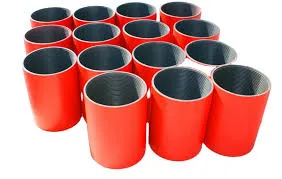- Afrikaans
- Albanian
- Amharic
- Arabic
- Armenian
- Azerbaijani
- Basque
- Belarusian
- Bengali
- Bosnian
- Bulgarian
- Catalan
- Cebuano
- Corsican
- Croatian
- Czech
- Danish
- Dutch
- English
- Esperanto
- Estonian
- Finnish
- French
- Frisian
- Galician
- Georgian
- German
- Greek
- Gujarati
- Haitian Creole
- hausa
- hawaiian
- Hebrew
- Hindi
- Miao
- Hungarian
- Icelandic
- igbo
- Indonesian
- irish
- Italian
- Japanese
- Javanese
- Kannada
- kazakh
- Khmer
- Rwandese
- Korean
- Kurdish
- Kyrgyz
- Lao
- Latin
- Latvian
- Lithuanian
- Luxembourgish
- Macedonian
- Malgashi
- Malay
- Malayalam
- Maltese
- Maori
- Marathi
- Mongolian
- Myanmar
- Nepali
- Norwegian
- Norwegian
- Occitan
- Pashto
- Persian
- Polish
- Portuguese
- Punjabi
- Romanian
- Russian
- Samoan
- Scottish Gaelic
- Serbian
- Sesotho
- Shona
- Sindhi
- Sinhala
- Slovak
- Slovenian
- Somali
- Spanish
- Sundanese
- Swahili
- Swedish
- Tagalog
- Tajik
- Tamil
- Tatar
- Telugu
- Thai
- Turkish
- Turkmen
- Ukrainian
- Urdu
- Uighur
- Uzbek
- Vietnamese
- Welsh
- Bantu
- Yiddish
- Yoruba
- Zulu
Exploring the Design and Functionality of Seating Nipple Components in Engineering
Understanding Seating Nipple A Key Component in Fluid Systems
In a variety of mechanical and plumbing applications, the seating nipple plays a critical role in ensuring efficient fluid transfer and system integrity. Often overlooked, this small yet vital component is integral to the overall functionality of many systems, from automotive engines to industrial machinery. Understanding what a seating nipple is, how it functions, and its significance can enhance our appreciation for fluid dynamics and system design.
A seating nipple is a type of fitting used to connect pipes or hoses in fluid transfer systems. Typically made from robust materials like stainless steel, brass, or plastic, these nipples ensure a tight and leak-proof seal. The design usually consists of a cylindrical or tapered shape, allowing it to fit snugly into corresponding fittings. This snug fit creates a mechanical barrier that prevents fluid from escaping, which is crucial for maintaining pressure and efficiency in piping systems.
In plumbing applications, seating nipples are often utilized in conjunction with fixtures such as faucets, showerheads, and water heaters
. Their ability to provide a secure connection means that water can flow freely without the risk of leaks, which can lead to significant water loss and potential damage if left unchecked. In industrial scenarios, they facilitate the transfer of chemicals and fuels, where the stakes are even higher due to the potential hazards associated with leaks.seating nipple

One of the most important features of seating nipples is their adaptability. They come in various sizes and shapes, allowing them to fit a wide range of pipe or hose diameters. This versatility makes them essential components in customizing fluid systems to meet specific needs. For instance, a system requiring high-pressure fluid transfer may utilize specialized seating nipples designed to withstand elevated forces. Conversely, systems designed for lower pressures may employ simpler designs, ensuring cost-effectiveness without compromising safety.
Another significant aspect of seating nipples is their role in maintenance and repair. In complex systems where components are frequently changed or serviced, using a seating nipple can streamline the process. Instead of having to replace entire sections of piping, technicians can easily disconnect and reconnect hoses without the need for extensive disassembly. This ease of maintenance not only saves time but also reduces the risk of introducing contaminants into the system.
Despite their small size, the implications of using high-quality seating nipples are substantial. Poorly designed or substandard materials can lead to leaks, which may escalate into larger issues, including equipment failure or environmental hazards. Therefore, investing in reliable seating nipples is paramount for anyone involved in the design or maintenance of fluid systems. Quality assurance processes, including testing for pressure resistance and compatibility with various fluids, are critical in ensuring the longevity and effectiveness of these fittings.
In conclusion, the seating nipple is a vital component within a variety of fluid transfer systems. Its ability to provide secure, leak-proof connections makes it indispensable in both residential and industrial settings. By enabling easy maintenance and adapting to different fluid dynamics, seating nipples enhance the efficiency and reliability of plumbing and mechanical systems alike. As industries continue to evolve, the importance of quality fittings like seating nipples will only grow, underscoring the need for meticulous selection and proper installation in engineering practices.
-
Tubing Pup Joints: Essential Components for Oil and Gas OperationsNewsJul.10,2025
-
Pup Joints: Essential Components for Reliable Drilling OperationsNewsJul.10,2025
-
Pipe Couplings: Connecting Your World EfficientlyNewsJul.10,2025
-
Mastering Oilfield Operations with Quality Tubing and CasingNewsJul.10,2025
-
High-Quality Casing Couplings for Every NeedNewsJul.10,2025
-
Boost Your Drilling Efficiency with Premium Crossover Tools & Seating NipplesNewsJul.10,2025







